
Critical Path
Securing Canada’s place in the global critical minerals race
The world needs Canada’s critical minerals, and fast. Canadian reserves of six priority critical minerals—copper, nickel, lithium, graphite, cobalt, and rare earth elements—far exceed current production levels, and offer a multi-billion dollar economic opportunity in the global transition to clean technologies.
Global demand for these six priority critical minerals is projected to almost double by 2040. But Canada is in danger of losing out on billions of dollars, as well as the opportunity to shore up our energy security, while navigating a volatile and competitive trade environment.
If companies are unable to attract the investment required to increase critical mineral production to meet domestic demand alone, Canada risks leaving $12 billion on the table annually by 2040—and that’s before considering the sizable export opportunities.
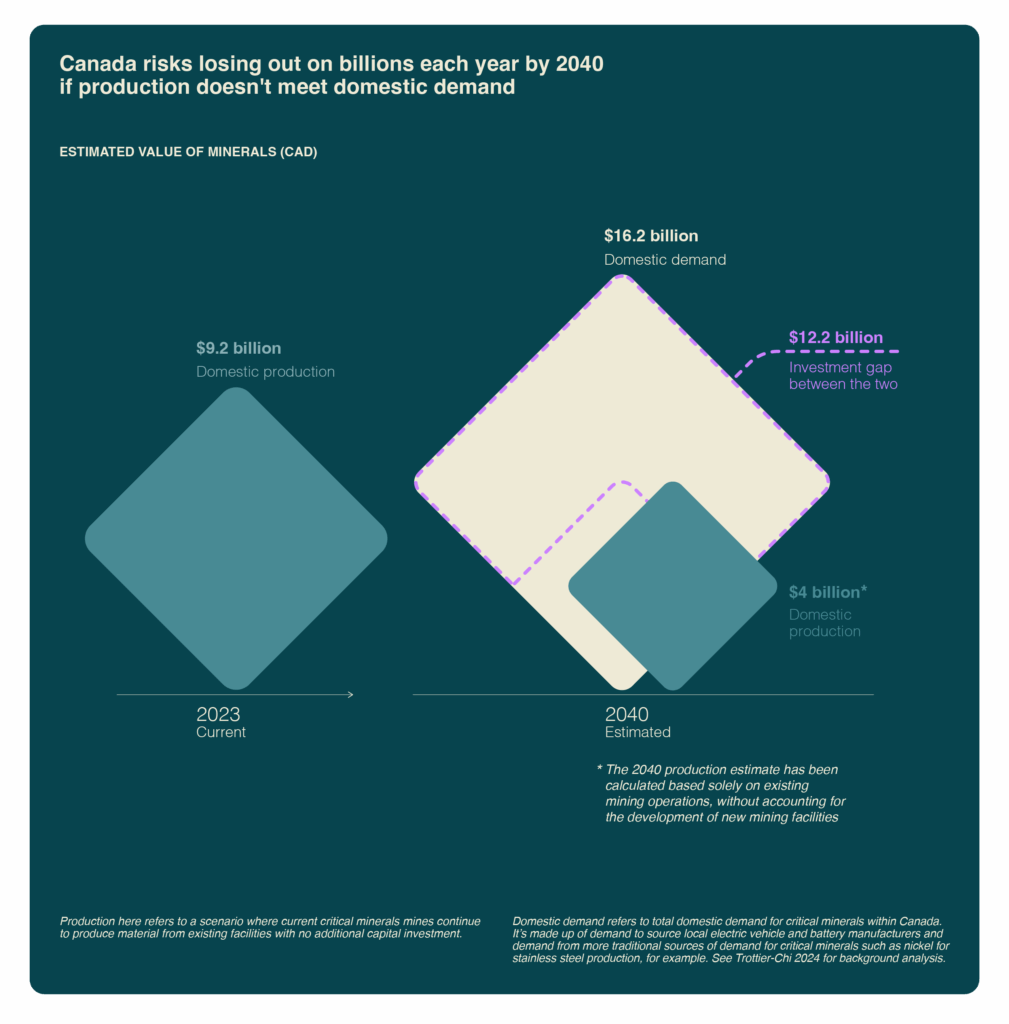
The Canadian Climate Institute’s report, Critical Path: Securing Canada’s place in the global critical minerals race, looks at how governments can attract private capital and cut project timelines—without cutting corners—to expand the production of critical minerals.
Those goals can be achieved by sharing financial risks with investors, strengthening Indigenous rights and partnerships in project development, reducing environmental risks to secure local support, and improving the efficiency of project reviews.
Canada needs to act swiftly to seize this generational opportunity, and secure its place in the global race for critical minerals.
Scroll to explore our key findings and policy recommendations, or download the report.
A multi-billion dollar economic opportunity
Canada’s critical minerals sector has barely scratched the surface of a multi-billion dollar opportunity. Expanding Canada’s critical mineral mining activities could capitalize on some of the economy’s inherent strengths: a well-regulated financial sector with extensive mining expertise, high environmental, social, and governance standards, and a low-carbon power grid with competitive electricity rates.
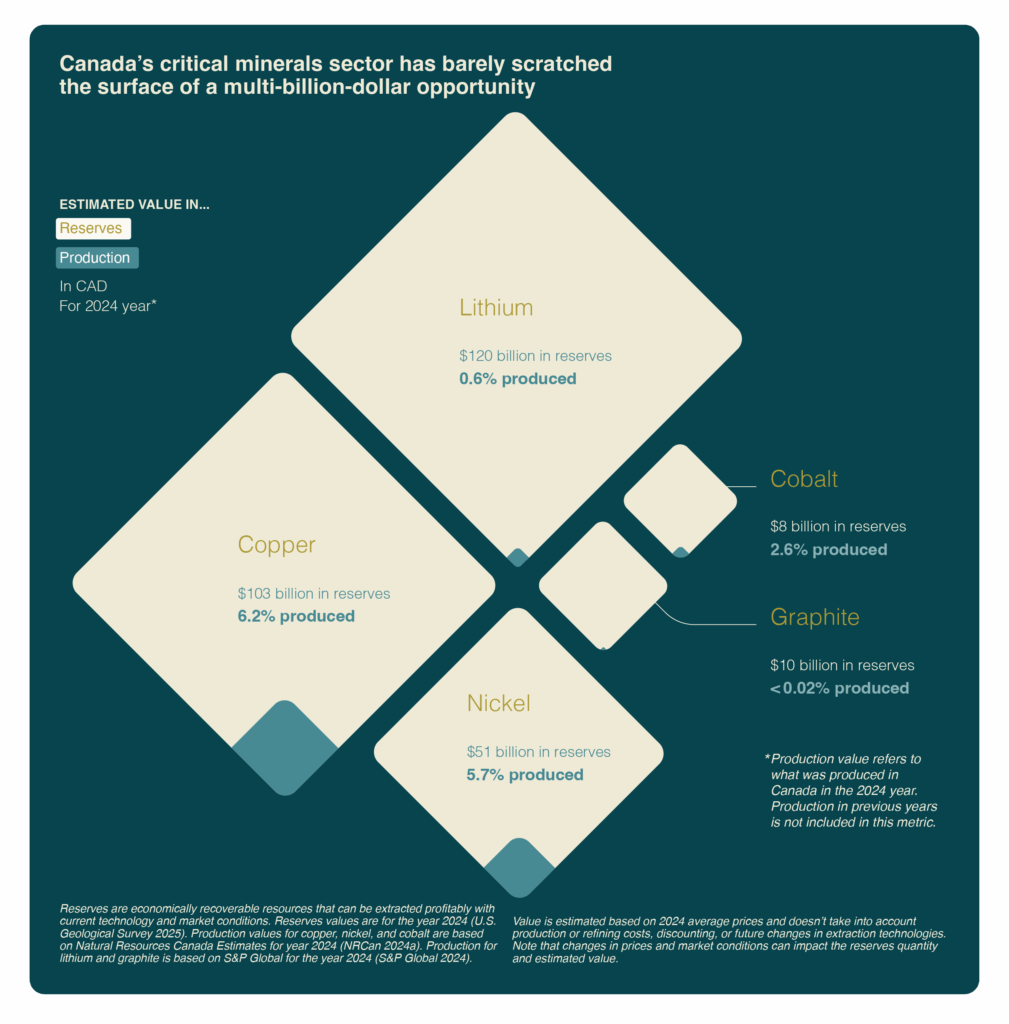
Large export markets expected to see substantial growth
Canada’s future exports are not dependent on the U.S. alone—demand in other countries is expected to grow significantly.
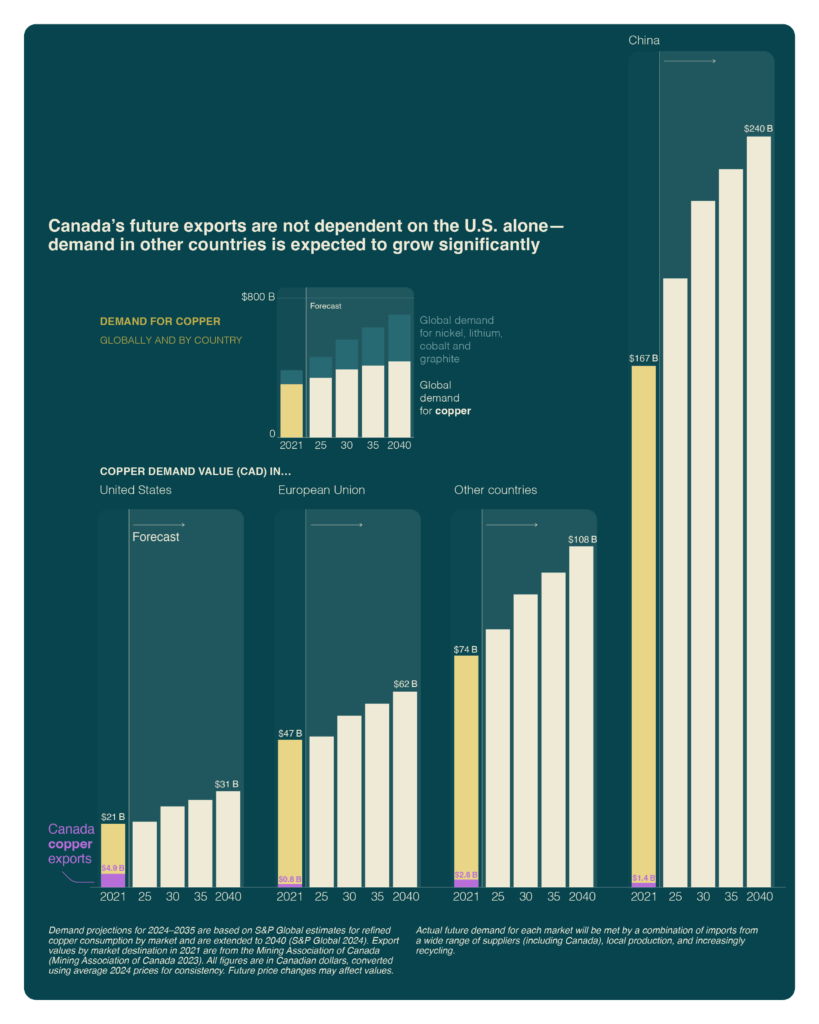
In a world of geopolitical turmoil, ramping up investment in critical minerals will provide security for production of goods like electric vehicles and renewable energy technologies.
Investment is not keeping pace with domestic and global demand
Canada needs new investment of $30 billion over the next 15 years to fully meet domestic critical minerals potential. To meet the growth in global demand, investment in Canadian critical minerals would have to increase to $65 billion in that time frame.
One of the biggest factors holding back this investment is high volatility in the market prices for critical minerals. Investors face substantial financial risks from big price swings in the market.
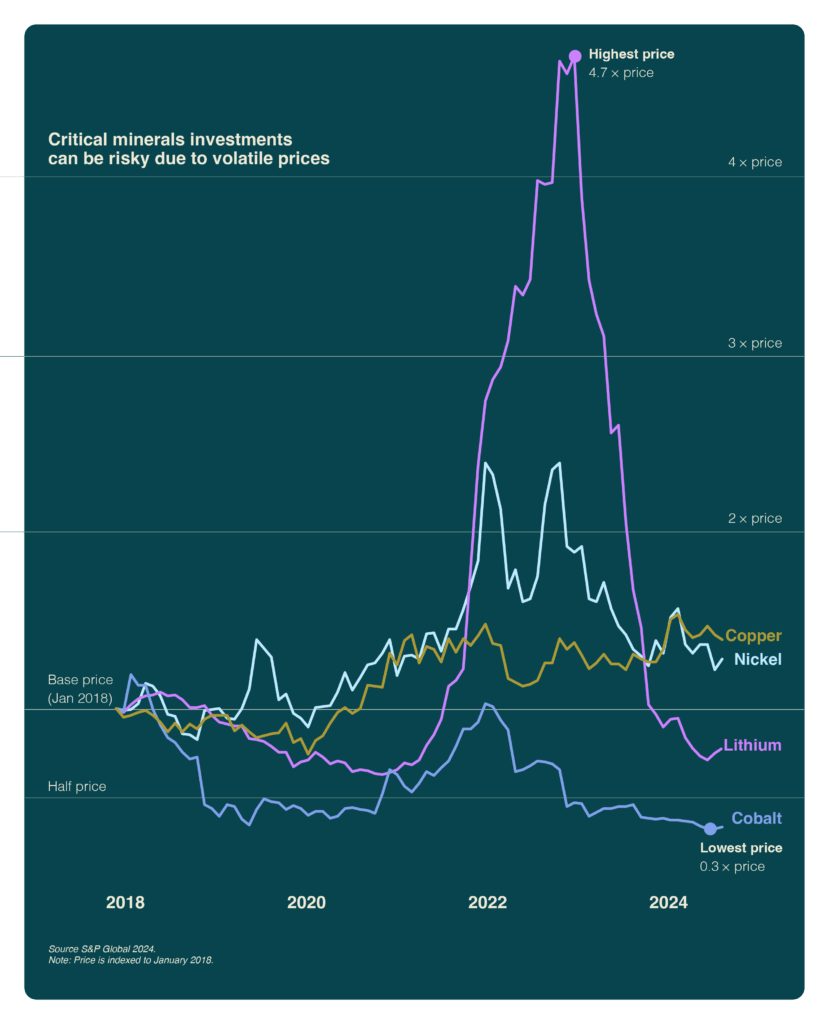
Sharing financial risks can spur investment in critical minerals
One way to reduce these risks and accelerate investment is for governments to share the financial risk of projects through agreements like equity investments, contracts for difference, or offtake agreements.
The most direct way for governments to share the financial risks of a mine is to take equity shares in the project. As equity holders, governments can provide the capital that private markets won’t, sharing both the downside risks and the upside potential of projects in the face of long payback periods.
Similarly, contracts-for-difference are contracts designed to protect investors from price volatility by establishing a negotiated settlement price. When market prices fall below the defined settlement price, a government pays the difference to the producer. When prices rise above it, the producer pays the surplus back to the government.
The contracts are meant to be temporary in nature, providing some price stability for investors while markets mature and become more predictable.
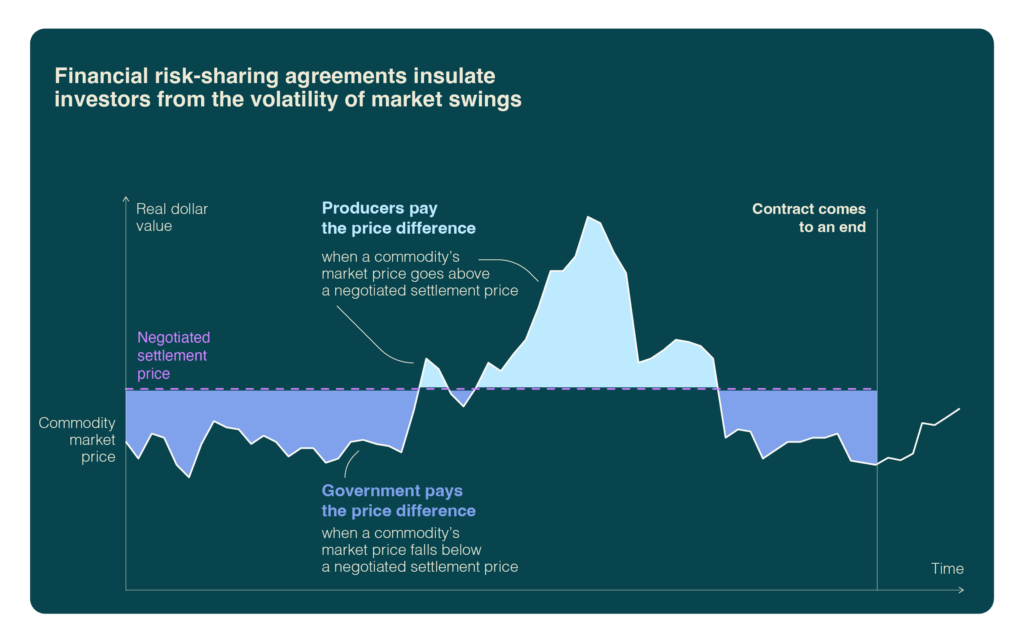
Cutting project timelines without cutting corners
Across the country, governments have committed to streamline projects and their development timelines in the face of growing uncertainty in international trade.
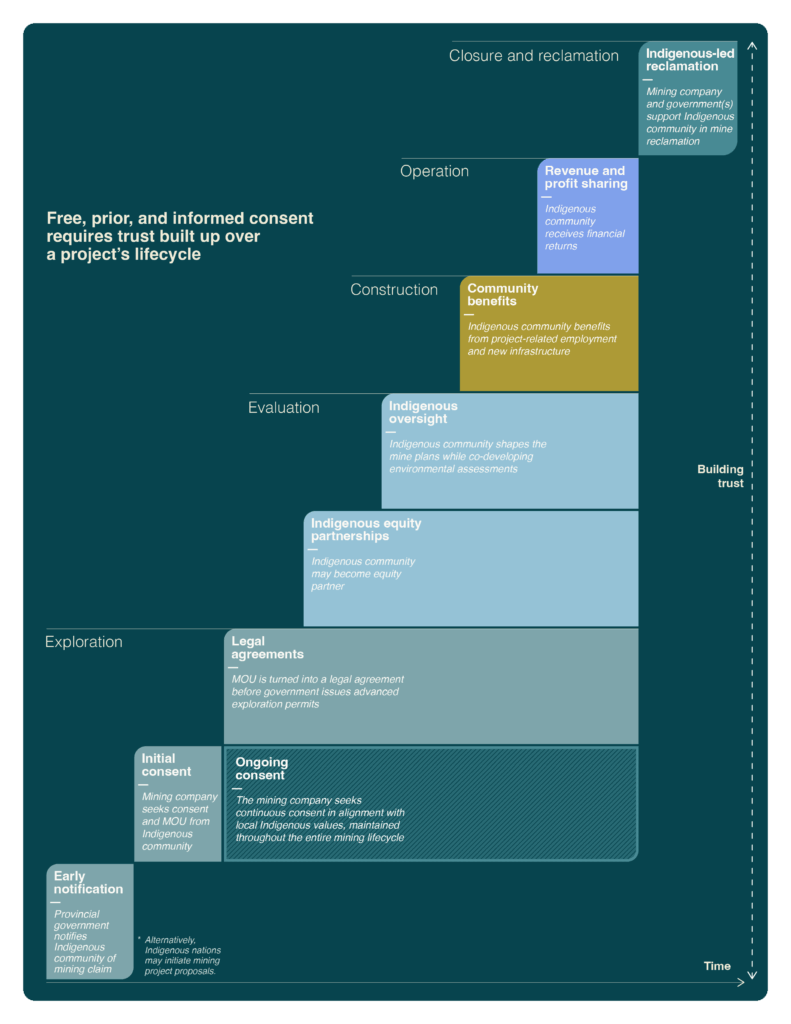
This can be achieved while maintaining strong environmental regulations and Indigenous consultation—research finds that doing so increases the likelihood of securing community support and project approval, while helping to prevent further delays down the road.
Respecting Indigenous self-determination and enabling partnerships can improve critical mineral proposals to the benefit of the communities most affected. It can also de-risk investments. The principle of free, prior, and informed consent is essential to the decision-making process for critical mineral projects and can help to build trust over a project’s lifecycle. It ensures Indigenous communities are able to participate in the economic opportunities through all phases of a project, and can manage the related risks in line with their worldviews, cultures, and values.
Environmental risks from new mining projects can also pose high risks for investors. Inadequate storage of mining tailings and abandoned mines can expose local communities to increased health and safety risks, and recent mining disasters have impacted trust in the industry and regulatory systems.
Building new critical minerals mines at the pace and scale needed will be impossible if faced with local opposition. Improving environmental protections and aligning regulations with leading standards can build public confidence and further de-risk projects for both communities and investors.
Recommendations
The opportunity for Canada in critical mineral mining is clear. But large uncertainties in global markets, community opposition, and inefficiencies in the regulatory review process are slowing investment in Canadian projects.
Smart policies can unlock investment and seize this multi-billion dollar opportunity.
The following recommendations provide Canada’s provincial, territorial, and federal governments the building blocks to unlock investment in critical minerals. These policy measures will help projects secure financing, enable Indigenous community participation from exploration to reclamation, and build trust with local communities through strong environmental risk management.
Recommendations:
- Develop agreements that share the financial risk of investment in critical mineral projects, many of which are disrupted by volatile swings in market prices.
- Provide funding for Indigenous communities to engage and partner with mining projects and enhance access to capital for ownership opportunities.
- Strengthen mining regulations to reduce environmental risks and liabilities for communities.
- Improve the efficiency of project reviews without cutting back environmental safeguards or Indigenous consultations.
Scoping papers
STAY CONNECTED
Don’t miss the latest from the Canadian Climate Institute.
Sign up to receive future research from the Canadian Climate Institute, as well as timely policy analysis, blogs, and event invitations.
Support our work by donating to the Institute.
